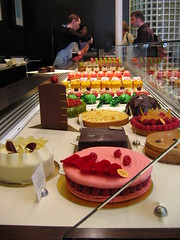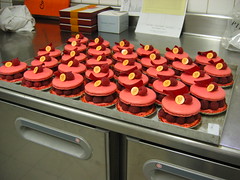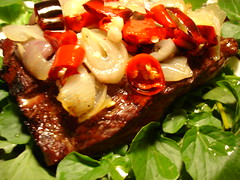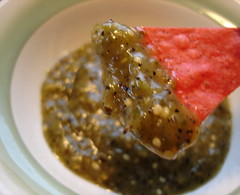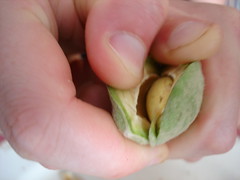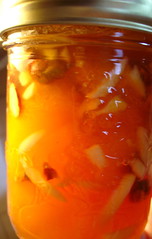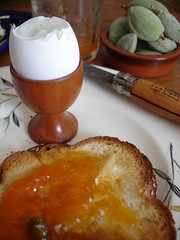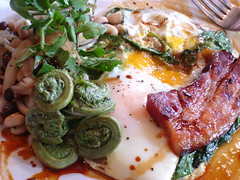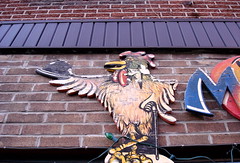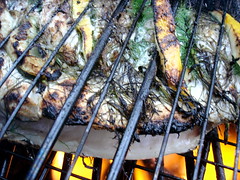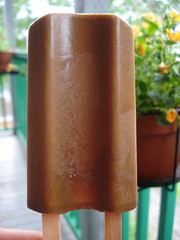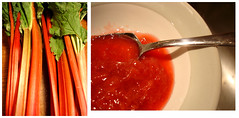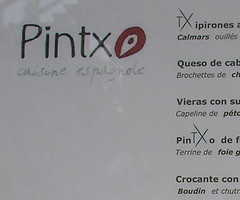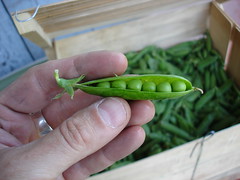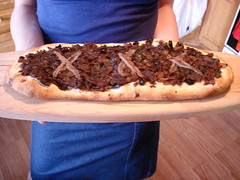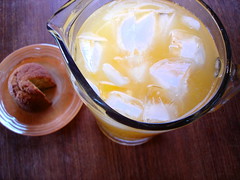Special report from Paris
What follows is a special report from Stephanie who has been apprenticing at Pierre Hermé in Paris. She has been there for almost 2 months. We have no idea when she will return. We hope she'll be back soon, but we'd certainly understand if she stayed a while longer. How did she get an apprenticeship at Pierre Hermé? She asked. Some things are simpler than they seem.
Having unpaid help was hard for them to refuse, but, for me, it was a chance for a great experience.
I started on a Monday morning, with the macaroniers... I have to admit that I was a little disappointed to see that we made thousands of macarons in a few hours--it took away a little of the magic, but fortunately not the taste and quality. Then I went to the lab on Bonaparte and I've been there ever since. 5 weeks now. I've been nicknamed Caribou (and they do mock my accent), or Miss Ispahan... (*see note below) hundreds everyday! But once you get the hang of it, it’s all right.
So at Bonaparte, they do the finishing of the cakes, because of the small size of the labs in the heart of St-Germain des Près (I can imagine the rent...), and the chocolaterie is also there. Everything else is done at Vaugirard in the 15th arrondissement, where I will be for the next 4 weeks. Wow, it’s crazy how time flies! So this means that I've been in Paris for 7 weeks now, but I don't feel that I've taken advantage enough of it!
Since I'm not paid at PH, I needed to find a part-time job for a little money, so my roommate found this little bistro where they needed a pastry cook for the summer. Perfect! I do mise-en-place on Tuesdays, and the service Thursday, Friday and Saturday. On those days, I take a nap in the afternoon instead of walking around the Seine or relaxing in the Jardin du Luxembourg... I do get 2 full days off, but usually use one to sleep all day, and the other to do groceries and go to museums and expositions. Today is Monday, and feels like a day to go read in the Jardin, see the photo expo and eat a pastry from Aoki, which is just around the corner. People that I meet are nice, no crazy stories about loud Parisians to report! I'm enjoying the fresh bread, butter croissants and great cheese a little too much... I hope everybody is enjoying Montreal this summer. I wish I was there, but I have to admit that Paris is not bad at all...
Bravo, Steph! Bon courage et merci pour les photos et nouvelles. And keep knockin' 'em dead!
m
*note* The Ispahan is one of Pierre Hermé's top-selling items and it may very well be his signature patisserie: rose cream, litchis, and raspberries sandwiched between two rose macarons, all of it topped with a rose petal (a real one). Believe the hype. It really is transcendent. His boutique is pretty out of this world, too. It feels more like a high-end jewelry store than a mere patisserie somehow. In any case, the Ispahan makes for a perfect picnic in the Jardin du Luxembourg (speaking of transcendent) nearby. Of course, if you can't wait to savor your Ispahan, the Place St. Sulpice is also rather beautiful and it's even closer.
